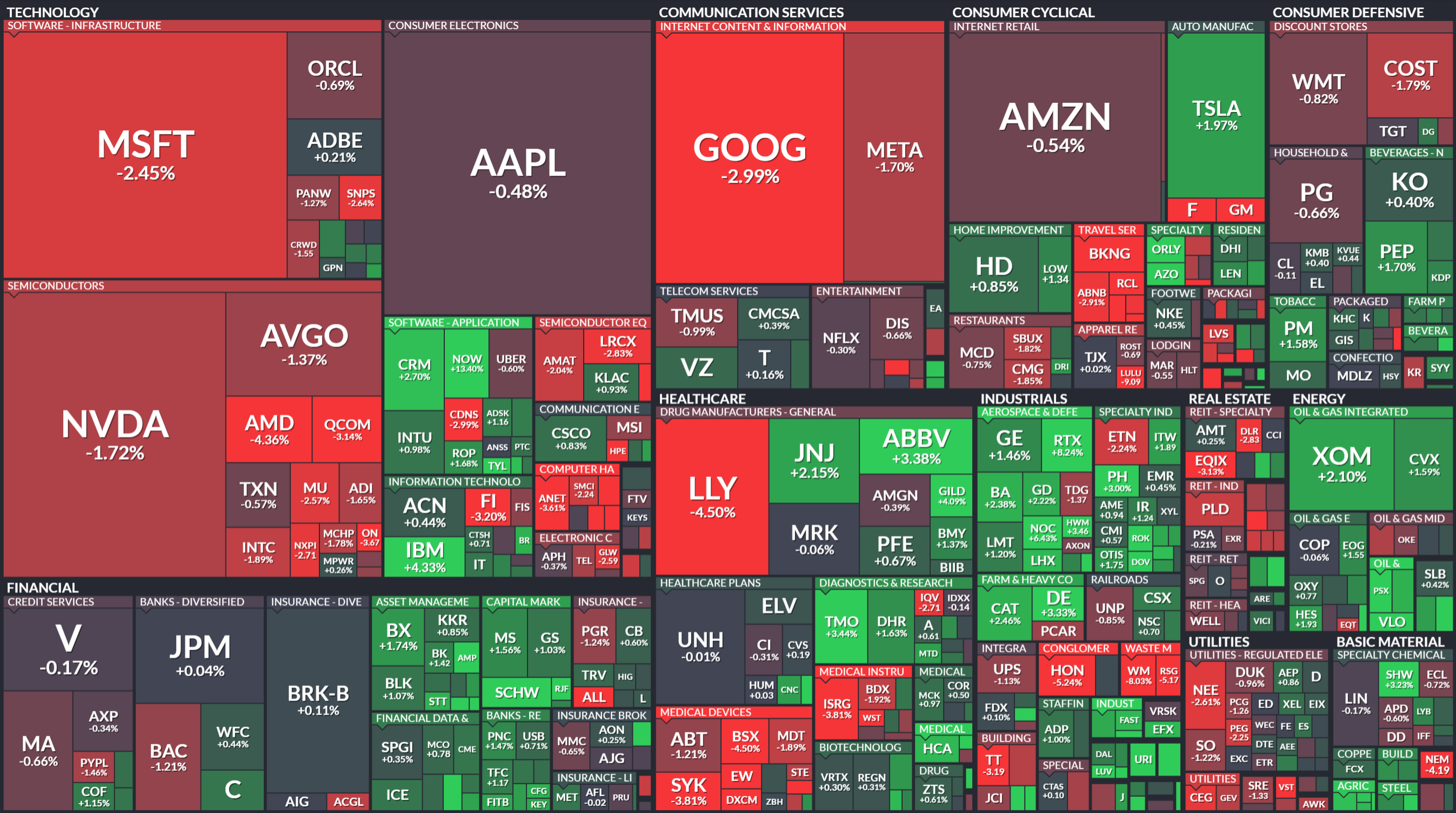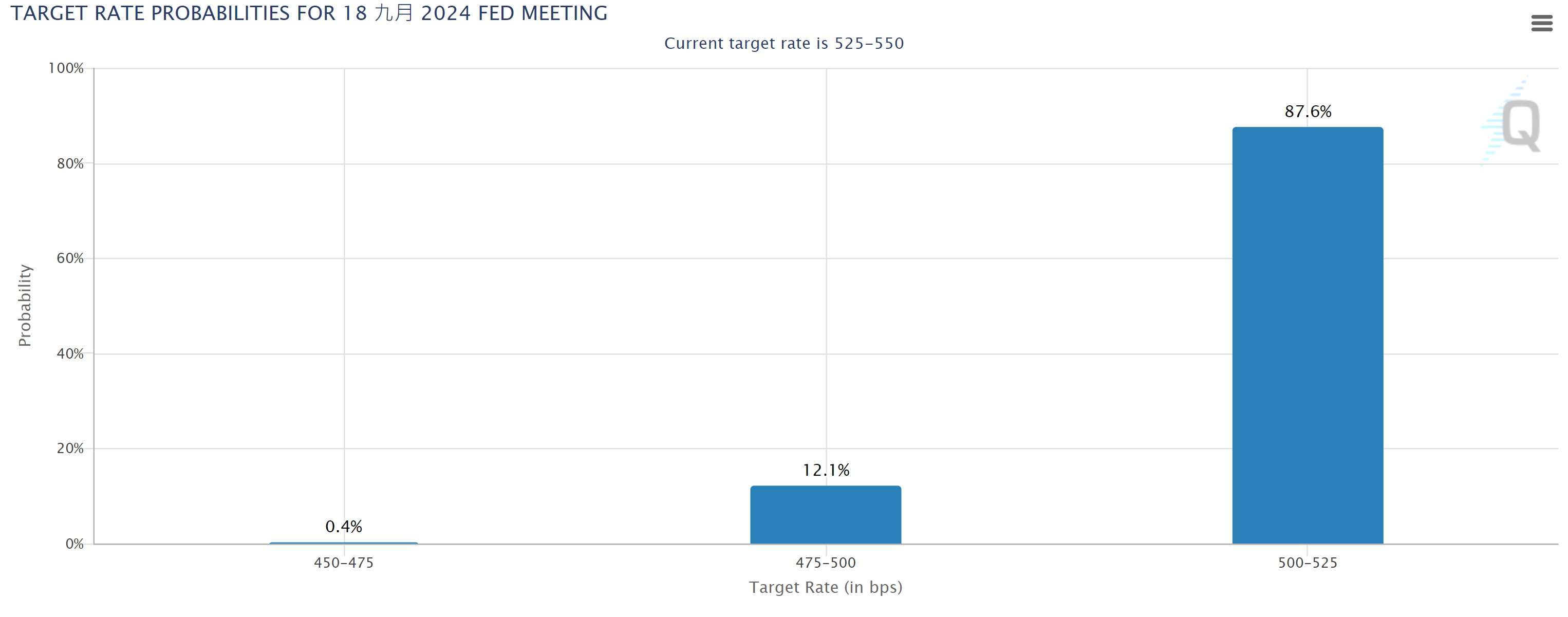A number of U.S. economic data were released on Thursday night, including: second-quarter GDP growth accelerated to 2.8% from the first-quarter quarterly annual growth rate of 1.4%, which was better than market expectations of 2%; personal consumption increased by 2.3%; there were also worries about The expected 2% indicates that the U.S. economy remains strong in a high interest rate environment.
At the same time, the preliminary quarterly annual growth rate of the core personal consumption expenditures price index (PCE), which the Federal Reserve focuses on, slowed from 3.7% in the first quarter to 2.9% in the second quarter, although it was still higher than the 2.7% expected by economists. , but it showed that inflation has not heated up, which continued to boost market expectations for an interest rate cut in September.
In addition, the U.S. Department of Labor also released data showing that the labor market has not changed significantly. The number of initial claims for unemployment benefits fell by 10,000 to 235,000 last week, lower than the original estimate of 238,000. As of July 13, the number of continuing claims for unemployment benefits fell by 9,000 to 1.851 million, lower than the original estimate of 238,000. Expected 1.868 million.
U.S. stocks have divergent trends, technology stocks continue to fall
However, investors continued to sell technology stocks on Thursday in response to disappointing technology stock earnings reports and better-than-expected U.S. economic data. Huida once fell 7% to $106.3 during the session, and ended up down 1.72%. AMD fell. 4.36%, Meta fell 1.7%, Alphabet fell 2.99%, Microsoft fell 2.45%, Amazon fell 0.54%, while Tesla, which fell more than 12% on Wednesday, rebounded nearly 2%.
The four major U.S. stock indexes had divergent trends on Thursday. The Dow Jones Industrial Average opened lower and then surged higher, once soaring 584 points. However, almost all of the gains evaporated at the end. The Nasdaq Index and the S&P 500 Index refreshed the day's high at midday. point, began to fall in late trading, and ended in the black for the third consecutive day, while the Philadelphia Semiconductor Index continued to plummet:
- The Dow Jones Industrial Average rose 81.20 points, or 0.20%, to close at 39,935.07 points
- The S&P 500 fell 27.91 points, or 0.51%, to close at 5,399.22 points
- The Nasdaq fell 160.68 points, or 0.93%, to close at 17,181.73 points
- The Philadelphia Semiconductor Index fell 100.29 points, or 1.96%, to close at 5,005.36 points.
 Vital Knowledge analyst Adam Crisafulli said that the problem with technology stocks is not only unsatisfactory financial reports, but also being trapped by the violent sector rotation that began after the release of CPI in June. Many people thought that the selling pressure on technology stocks was short-lived, but it turned out to be quite In order to last, this makes the market more uneasy and puts more selling pressure on technology stocks.
Vital Knowledge analyst Adam Crisafulli said that the problem with technology stocks is not only unsatisfactory financial reports, but also being trapped by the violent sector rotation that began after the release of CPI in June. Many people thought that the selling pressure on technology stocks was short-lived, but it turned out to be quite In order to last, this makes the market more uneasy and puts more selling pressure on technology stocks.
Yung-Yu Ma, chief investment officer of BMO Wealth Management, said he believes the market trend is somewhat unstable. Market doubts have been rising. They were intensified on Wednesday and eased on Thursday. Investors are still trying to digest Wednesday's disappointing earnings report. and grappling with political and economic uncertainty, but recent data shows that the U.S. economy remains resilient.
Pay attention to PCE data
In addition, investors are currently focusing on the US June personal consumption expenditures index (PCE), which will be released at 20:30 Taiwan time tonight (Friday), which may affect the Federal Reserve's interest rate path. The Federal Reserve will hold a policy meeting on the 30th and 31st of this month. Analysts believe that the latest data is expected to increase the Fed's confidence in cutting interest rates, making the possibility of a further interest rate cut in September higher.
The U.S. PCE in June is expected to increase by 2.5% annually, a further slowdown from the 2.6% annual increase in May. Kelvin Wong, senior market analyst at OANDA Asia Pacific, said that if the PCE data shows that inflation is slowing down, the Federal Reserve may in September Monthly interest rate cut.
According to data from CME Group Fedwatch, the market expects the Federal Reserve to remain on hold in July, but there is an 87.6% chance of a 1-digit rate cut to 5% to 5.25% in September, and a 2-digit rate cut to 4.75% to 5%. Then there are 12.1%.








